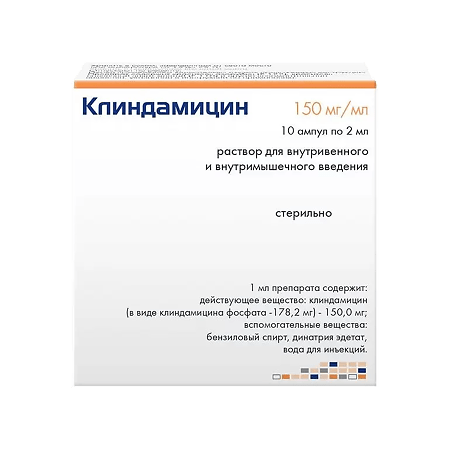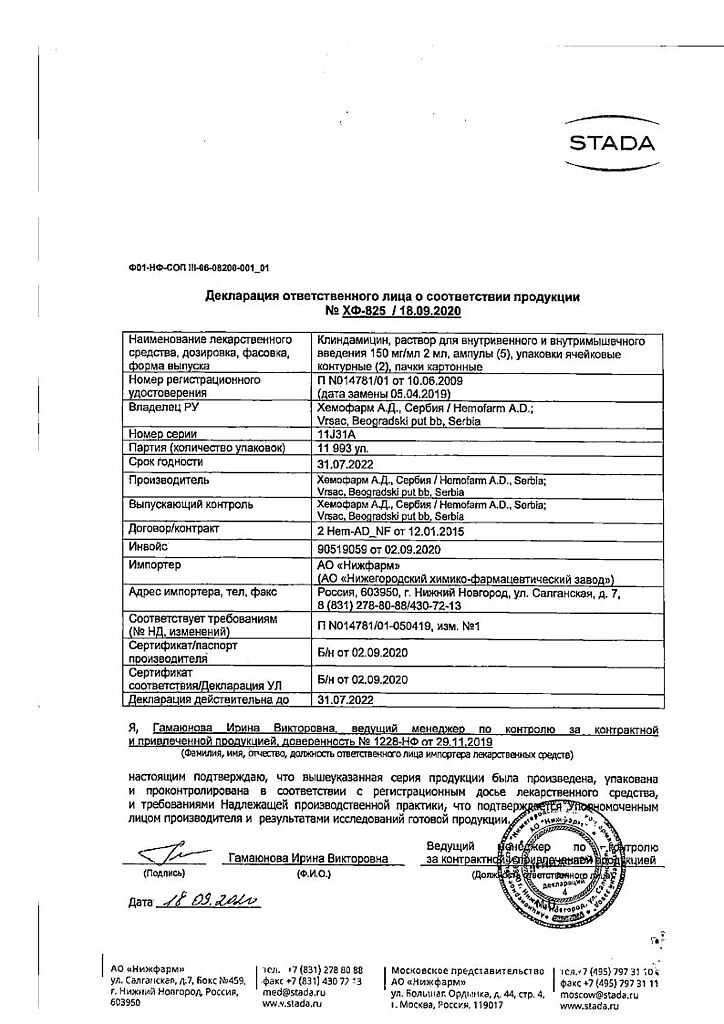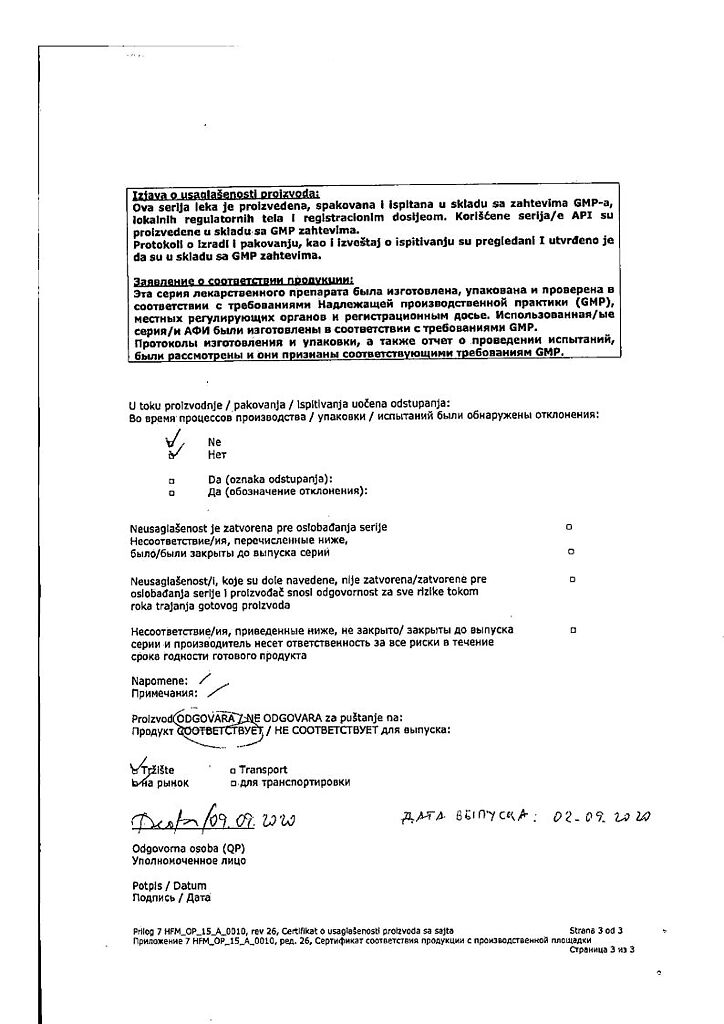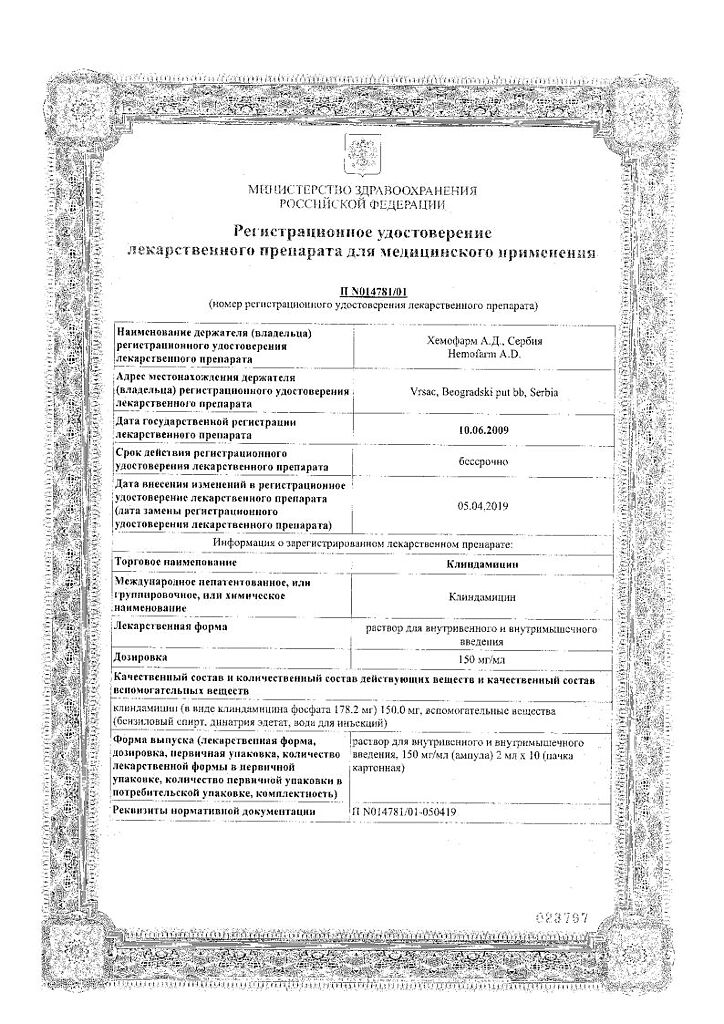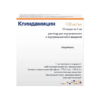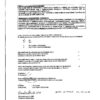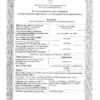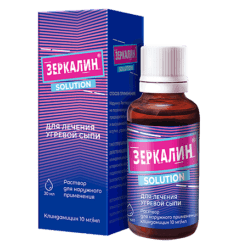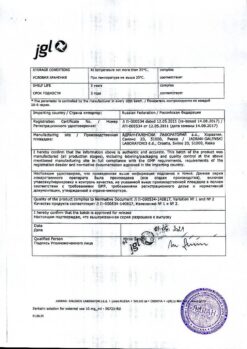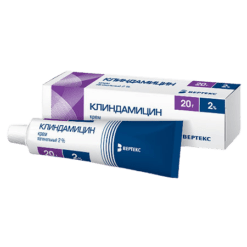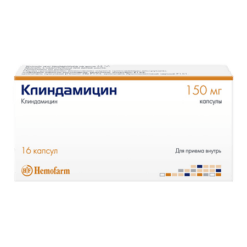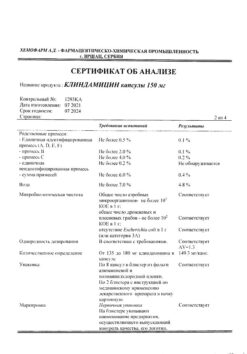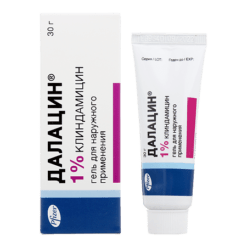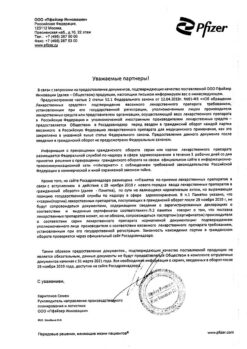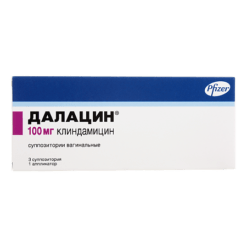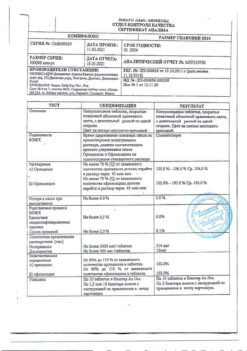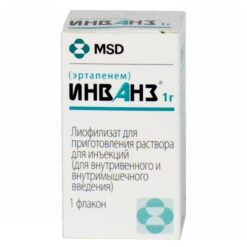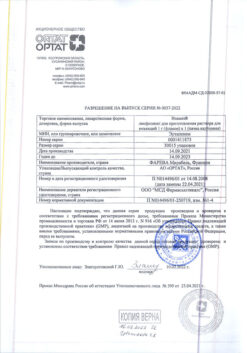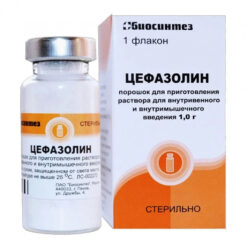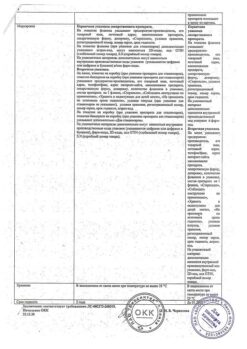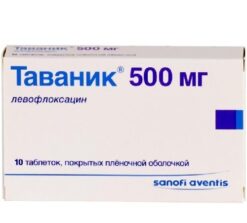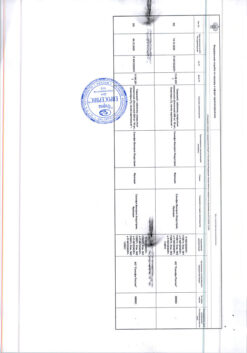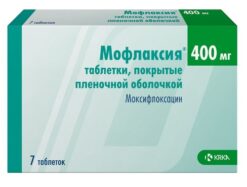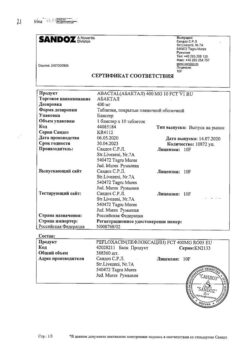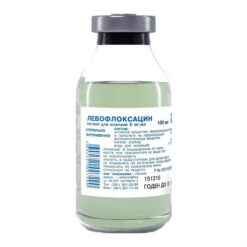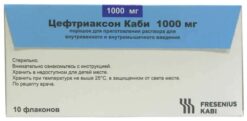No products in the cart.
Clindamycin, 150 mg/ml 2 ml 10 pcs
€17.73 €14.77
Description
Lung inflammation (pneumonia), Skin infections
Infections of the upper and lower respiratory tract (pharyngitis, tonsillitis, diphtheria, sinusitis, otitis, pneumonia, bronchitis, scarlet fever, lung abscess), skin and soft tissue, bones and joints (osteomyelitis, septic arthritis), in
dentistry, urogenital (chlamydia, endometritis, vaginal infections, tubo-ovarian inflammation) and abdominal infections (peritonitis, abscess), otitis media, septicemia, endocarditis.
Indications
Indications
infectious and inflammatory diseases caused by microorganisms sensitive to clindamycin;
infections of the upper respiratory tract and infections of the ENT organs (pharyngitis, tonsillitis, sinusitis, otitis), lower respiratory tract (pneumonia, including aspiration, lung abscess, pleural empyema, bronchitis), scarlet fever, diphtheria;
infections of the urogenital tract (chlamydia, endometritis, vaginal infections, tubo-ovarian inflammation);
infections of the skin and soft tissues (infected wounds, abscesses, boils, panaritium), abdominal cavity (peritonitis, abscess), oral cavity;
acute and chronic osteomyelitis;
septicemia (primarily anaerobic);
bacterial endocarditis;
prevention of peritonitis and intra-abdominal abscesses after intestinal perforation or as a result of traumatic infection (in combination with aminoglycosides).
Pharmacological effect
Pharmacological effect
Pharmacotherapeutic group: Systemic antibacterial agents; macrolides, lincosamines and streptogramins; lincosamides
Pharmacological action
Clindamycin is a drug from the group of antibiotics – lincosamides, has a wide spectrum of action, is bacteriostatic, binds to the 50S ribosomal subunit and inhibits protein synthesis in microorganisms. Active against Staphylococcus spp. (including Staphylococcus epidermidis, producing penicillinase), Streptococcus spp. (excluding Enterococcus spp.), Streptococcus pneumoniae, anaerobic and microaerophilic gram-positive cocci (including Peptococcus spp. and Peptostreptococcus spp.), Corynebacterium diphtheriae, Clostridium perfringens, Clostridium tetani, Mycoplasma spp., Bacteroidesspp. (including Bacteroides fragilis and Bacteroides melaningenicus), anaerobic gram-positive, non-spore forming bacilli (including Propionibacterium spp., Eubacterium spp., Actinomyces spp.).
Most strains of Clostridium perfringens are sensitive to clindamycin, but other types of clostridia (Clostridium sporogenes, Clostridium tertium) are resistant to the drug, therefore, for infections caused by Clostridium spp., an antibiogram is recommended.
According to the mechanism of action and antimicrobial spectrum, it is close to lincomycin (against some types of microorganisms, especially against bacteroids and non-spore-forming anaerobes, it is 2-10 times more active).
Pharmacokinetics
It is quickly and completely absorbed from the gastrointestinal tract; simultaneous food intake slows down absorption without changing the concentration of the drug in plasma. Easily penetrates into biological fluids and tissues (tonsils, muscle and bone tissue, bronchi, lungs, pleura, bile ducts, appendix, fallopian tubes, prostate gland, synovial fluid, saliva, sputum, wound surfaces); passes through the BBB poorly (with inflammation of the meninges, the permeability of the BBB increases). Cmax in the blood is achieved with oral administration after 0.75-1 hour, after intramuscular administration – after 1 hour in children and 3 hours in adults, with intravenous administration – by the end of the infusion.
At a therapeutic concentration, it circulates in the blood for 8-12 hours, T1/2 is about 2.4 hours; metabolized predominantly in the liver (70-80%) with the formation of active (N-dimethylclindamycin and clindamycin sulfoxide) and inactive metabolites; excreted within 4 days by the kidneys (10%) and through the intestines (3.6%) in the form of an active drug, the rest – in the form of inactive metabolites.
Special instructions
Special instructions
Pseudomembranous colitis can appear both while taking clindamycin and 2-3 weeks after stopping treatment (3-15% of cases); manifested by diarrhea, leukocytosis, fever, abdominal pain (sometimes accompanied by the release of blood and mucus in the stool).
If these phenomena occur in mild cases, it is sufficient to discontinue treatment and use ion exchange resins (colestyramine, colestipol); in severe cases, replacement of the loss of fluid, electrolytes and protein, and the appointment of oral vancomycin or metronidazole are indicated.
Do not use medications that inhibit intestinal motility.
The safety of the drug in children under 3 years of age has not been established. During long-term therapy, children need periodic monitoring of their blood count and liver function.
When prescribing the drug in high doses, monitoring the concentration of clindamycin in plasma is necessary.
Patients with severe liver failure should monitor liver function (liver enzymes).
Active ingredient
Active ingredient
Clindamycin
Active components
Active components
Clindamycin
Composition
Composition
1 ml contains
Clindamycin phosphate 150 mg
Pregnancy
Pregnancy
Contraindicated.
Contraindications
Contraindications
myasthenia gravis;
bronchial asthma;
ulcerative colitis (history);
rare hereditary diseases such as: galactose intolerance, lactase deficiency or glucose-galactose malabsorption (for capsules);
pregnancy;
lactation period;
children under 3 years of age – for a solution for intravenous and intramuscular administration (due to the lack of data on the safety of the use of benzyl alcohol);
children under 8 years of age for capsules (average child weight less than 25 kg);
increased sensitivity.
Clindamycin is used with caution in patients with severe hepatic and/or renal insufficiency and in elderly patients.
Side Effects
Side Effects
From the digestive system: dyspepsia (abdominal pain, nausea, vomiting, diarrhea), esophagitis, jaundice, liver dysfunction, hyperbilirubinemia, dysbacteriosis, pseudomembranous enterocolitis.
From the musculoskeletal system: rarely – disturbance of neuromuscular conduction.
From the hematopoietic organs: leukopenia, neutropenia, agranulocytosis, thrombocytopenia.
Allergic reactions: rarely – maculopapular rash, urticaria, itching; in some cases, exfoliative and vesiculobullous dermatitis, eosinophilia, anaphylactoid reactions.
From the cardiovascular system: with rapid intravenous administration – a decrease in blood pressure, up to collapse; dizziness, weakness.
Local reactions: irritation, pain (at the site of intramuscular injection), thrombophlebitis (at the site of intravenous injection).
Other: development of superinfection.
Interaction
Interaction
Clindamycin enhances (mutually) the effect of rifampicin, aminoglycosides streptomycin, gentamicin (especially in the treatment of osteomyelitis and the prevention of peritonitis after intestinal perforation).
Enhances the effect of competitive muscle relaxants, and also enhances muscle relaxation caused by n-cholinergic blockers.
Incompatible with ampicillin, barbiturates, aminophylline, calcium gluconate and magnesium sulfate.
Shows antagonism with erythromycin and chloramphenicol.
Concomitant use with solutions containing B complex vitamins, aminoglycosides, and phenytoin is not recommended.
Concomitant use with antidiarrheal drugs increases the risk of developing pseudomembranous colitis.
When used simultaneously with opioid (narcotic) analgesics, the respiratory depression they cause may increase (up to apnea).
Overdose
Overdose
In case of overdose, side effects may increase.
Treatment: symptomatic therapy, there is no specific antidote. Hemodialysis and peritoneal dialysis are ineffective.
Prescribing
Prescribing
Antibiotic-lincosamide
Storage conditions
Storage conditions
In a place protected from light, at a temperature not exceeding 10 °C.
Shelf life
Shelf life
2 years.
Manufacturer
Manufacturer
Hemofarm A.D., Serbia
Additional information
| Shelf life | 2 years. |
|---|---|
| Conditions of storage | In a place protected from light, at a temperature not exceeding 10 °C. |
| Manufacturer | Chemopharm A.D., Serbia |
| Medication form | solution |
| Brand | Chemopharm A.D. |
Other forms…
Related products
Buy Clindamycin, 150 mg/ml 2 ml 10 pcs with delivery to USA, UK, Europe and over 120 other countries.

